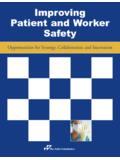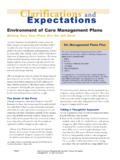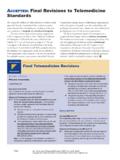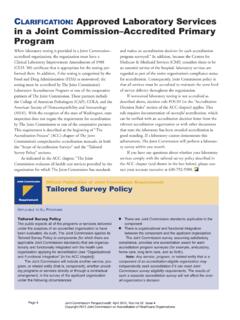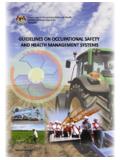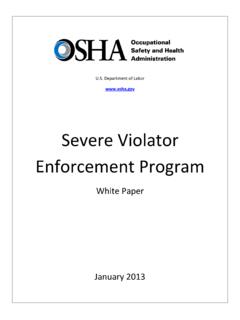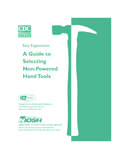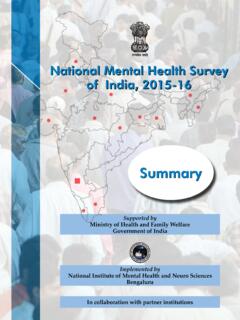Transcription of Workplace Violence Prevention Standards
1 A complimentary publication of The joint Commission Issue 30, June 18, 2021. Published for joint Commission accredited organizations and interested health care professionals, R3 Report provides the rationale and references that The joint Commission employs in the development of new requirements. While the Standards manuals also may provide a rationale, R3 Report goes into more depth, providing a rationale statement for each element of performance (EP). The references provide the evidence that supports the requirement. R3 Report may be reproduced if credited to The joint Commission. Sign up for email delivery. Workplace Violence Prevention Standards Effective January 1, 2022, new and revised Workplace Violence Prevention Standards will apply to all joint Commission-accredited hospitals and critical access hospitals. According to US Bureau of Labor Statistics data, the incidence of Violence related health care worker injuries has steadily increased for at least a decade.
2 Incidence data reveal that in 2018 health care and social service workers were five times more likely to experience Workplace Violence than all other workers comprising 73% of all nonfatal Workplace injuries and illnesses requiring days away from work. However, Workplace Violence is underreported, indicating that the actual rates may be much higher. Exposure to Workplace Violence can impair effective patient care and lead to psychological distress, job dissatisfaction, absenteeism, high turnover, and higher costs. The high incidence of Workplace Violence prompted the creation of new accreditation requirements. The new and revised joint Commission Standards provide a framework to guide hospitals in developing effective Workplace Violence Prevention systems, including leadership oversight, policies and procedures, reporting systems, data collection and analysis, post-incident strategies, training, and education to decrease Workplace Violence .
3 The accreditation manual's Glossary now defines Workplace Violence as An act or threat occurring at the Workplace that can include any of the following: verbal, nonverbal, written, or physical aggression; threatening, intimidating, harassing, or humiliating words or actions; bullying; sabotage; sexual harassment; physical assaults;. or other behaviors of concern involving staff, licensed practitioners, patients, or visitors.. Engagement with stakeholders, customers, and experts In addition to an extensive literature review and public field review, The joint Commission sought expert guidance from the following groups: Technical Advisory Panel (TAP) of practicing clinicians from health care and academic organizations, professional associations, and healthcare and government sectors. Standards Review Panel (SRP) of representatives from organizations or professional associations who provided a boots on the ground point of view and insights into the practical application of the proposed Standards .
4 The prepublication version of the Workplace Violence Prevention Standards will be available online until December 31, 2021. After January 1, 2022, please access the new requirements in the E-dition or Standards manual. Environment of Care 2021 The joint Commission Issue 30, June 18, 2021 Page 2 Workplace Violence Prevention Standards Standard : The hospital manages safety and security risks. Requirement EP 17: The hospital conducts an annual worksite analysis related to its Workplace Violence Prevention program. The hospital takes actions to mitigate or resolve the Workplace Violence safety and security risks based upon findings from the analysis. (See also , EP 1). Note: A worksite analysis includes a proactive analysis of the worksite, an investigation of the hospital's Workplace Violence incidents, and an analysis of how the program's policies and procedures, training, education, and environmental design reflect best practices and conform to applicable laws and regulations.
5 Rationale A successful approach to evaluating the effectiveness of a Workplace Violence Prevention program requires the performance of a worksite analysis. Environmental modifications are then implemented based on findings from the analysis. With best practices and applicable laws and regulations constantly evolving, hospitals must also review the program's policies and procedures, training, and education for consistency with the latest recommendations. Reference* 1. Arbury, S., Zankowski, D., Lipscomb, J. & Hodgson, M. (2017) Workplace Violence training programs for health care workers: an analysis of program elements. Workplace health & Safety. 65(6), 266-272. DOI: 2. International Association for Healthcare Security and Safety Foundation Evidence Based Healthcare Security Research Committee. (2019) IAHSS-F RS-19-02- Threat assessment strategies to mitigate Violence in healthcare . 3. McPhaul, , London, M.
6 & Lipscomb, (2013) A framework for translating Workplace Violence intervention research into evidence-based programs. The Online Journal of Issues in Nursing. Volume 18. Published online 1/1/2013. Accessed 11/16/2020 from OJIN/TableofContents/Vol-18-2013/No1-Jan -2013/A-Framework-for-Evidence-Based- 4. occupational Safety and health Administration, United States Department of Labor. (2016). OSHA 3148-06R 2016: Guidelines for Preventing Workplace Violence for Healthcare and Social Service Workers.. 5. The joint Commission Division of Healthcare Improvement. (2019) Quick safety: de- escalation in health care. Issue 47. Standard : The hospital collects information to monitor conditions in the environment. Requirement EP 1: The hospital establishes a process(es) for continually monitoring, internally reporting, and investigating the following: - Injuries to patients or others within the hospital's facilities - occupational illnesses and staff injuries - Incidents of damage to its property or the property of others - Safety and security incidents involving patients, staff, or others within its facilities, including those related to Workplace Violence - Hazardous materials and waste spills and exposures - Fire safety management problems, deficiencies, and failures - Medical or laboratory equipment management problems, failures, and use errors - Utility systems management problems, failures, or use errors Cont.
7 2021 The joint Commission Issue 30, June 18, 2021 Page 3 Workplace Violence Prevention Standards Requirement Cont. Note 1: All the incidents and issues listed above may be reported to staff in quality assessment, improvement, or other functions as well as to the designated leader of the Workplace Violence reduction effort. A summary of such incidents may also be shared with the person designated to coordinate safety management activities. Note 2: Review of incident reports often requires that legal processes be followed to preserve confidentiality. Opportunities to improve care, treatment, or services, or to prevent similar incidents, are not lost as a result of following the legal process. (See also , EP 17). EP 6: Based on its process(es), the hospital reports and investigates the following: Safety and security incidents involving patients, staff, or others within its facilities, including those related to Workplace Violence .
8 Rationale Establishing a process to collect data by monitoring, reporting, and investigating Workplace Violence incidents allows the hospital and critical access hospital to identify risk factors in the vulnerable areas and implement environmental controls, education, and other mitigation strategies. Ongoing data collection can identify trends, patterns, gaps in the program, and effectiveness of the program. Underreporting of Workplace Violence incidents is thought to be a major problem. As more organizations adopt standard processes for collecting and reporting data on Workplace Violence incidents, it should be possible to benchmark the performance of Workplace Violence Prevention programs so hospitals can judge their effectiveness and make modifications to further reduce incidents. Reference* 1. Arnetz, , Hamblin, L., Essenmacher, L., Upfal, , Ager, J. & Luborsky, M. (2015). Understanding patient-to-worker Violence in hospitals: a qualitative analysis of documented incident reports.
9 Journal of Advanced Nursing. 71(2), 338-348. DOI: 2. Hills , Ross , Pich J., Hill , Dalsb , Riahi S., Guay S., & Mart nez-Jarreta B., (2015) Education and training for preventing and minimising Workplace aggression directed toward healthcare workers. Cochrane Database of Systematic Reviews. Issue 9. DOI: 3. McPhaul, , London, M. & Lipscomb, (2013) A framework for translating Workplace Violence intervention research into evidence-based programs. The Online Journal of Issues in Nursing. Volume 18. Published online 1/1/2013. Accessed 11/16/2020 from OJIN/TableofContents/Vol-18-2013/No1-Jan -2013/A-Framework-for-Evidence-Based- 4. Morphet, J., Griffiths, D. & Innes, K. (2018). The trouble with reporting and utilization of Workplace Violence data in health care. Journal of Nursing Management. 27; 592- 598. DOI: 5. occupational Safety and health Administration, United States Department of Labor. (2016). OSHA 3148-06R 2016: Guidelines for Preventing Workplace Violence for Healthcare and Social Service Workers.
10 6. Odes, R., Hong, O., Harrison, R. & Chapman, S. (2020) Factors associated with physical injury or police involvement during incidents of Workplace Violence in hospitals: findings from the first year of California's new standard. American Journal of Industrial Medicine. 1-7. DOI: Human Resources 2021 The joint Commission Issue 30, June 18, 2021 Page 4 Workplace Violence Prevention Standards Standard : Staff participate in ongoing education and training. Requirement EP 29: As part of its Workplace Violence Prevention program, the hospital provides training, education, and resources (at time of hire, annually, and whenever changes occur regarding the Workplace Violence Prevention program) to leadership, staff, and licensed practitioners. The hospital determines what aspects of training are appropriate for individuals based on their roles and responsibilities. The training, education, and resources address Prevention , recognition, response, and reporting of Workplace Violence as follows: - What constitutes Workplace Violence - Education on the roles and responsibilities of leadership, clinical staff, security personnel, and external law enforcement - Training in de-escalation, nonphysical intervention skills, physical intervention techniques, and response to emergency incidents - The reporting process for Workplace Violence incidents Rationale Recognition of what constitutes Workplace Violence begins with awareness of the different types of physical and nonphysical acts and threats of Workplace Violence .

